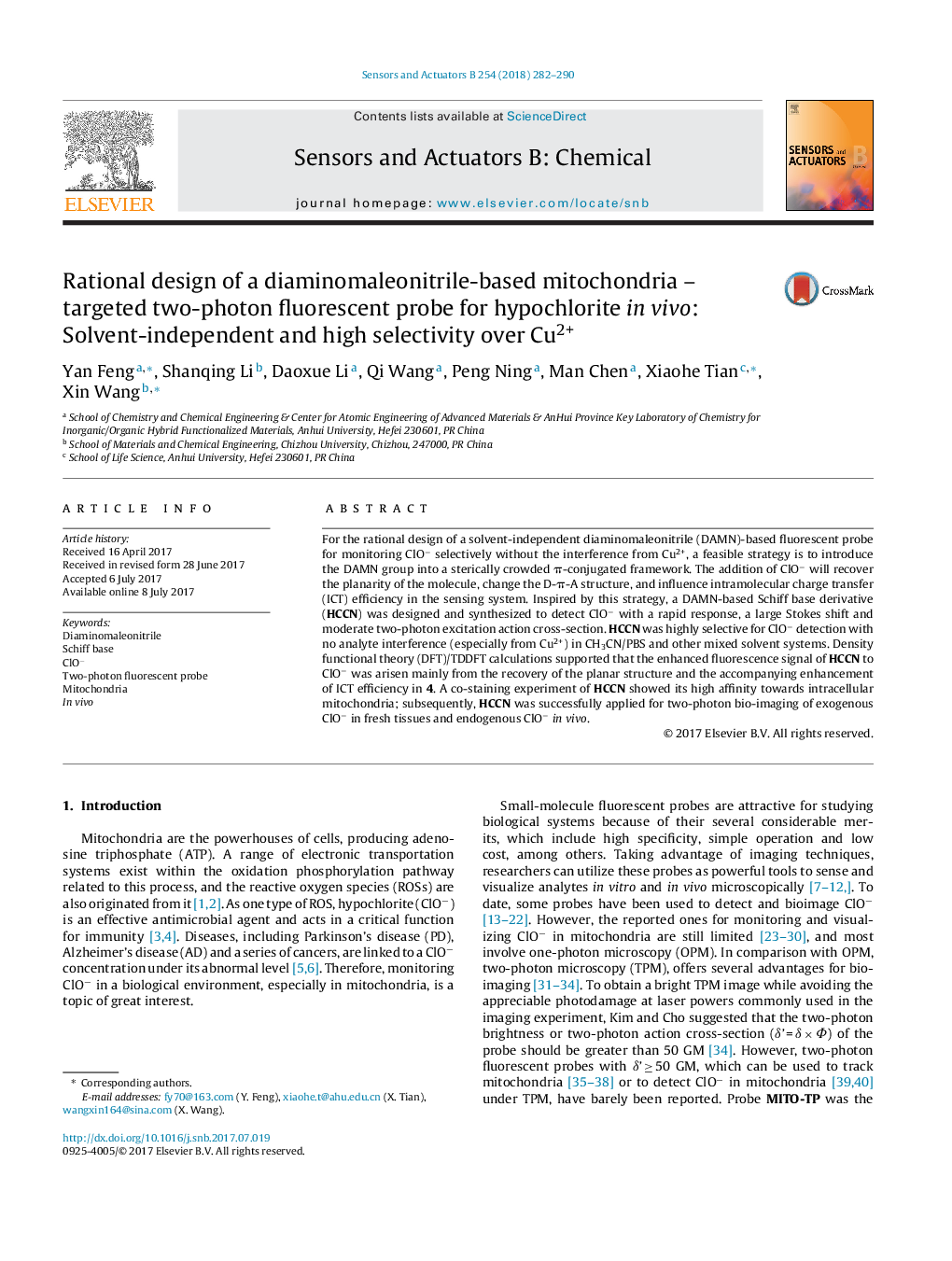| Article ID | Journal | Published Year | Pages | File Type |
|---|---|---|---|---|
| 5008676 | Sensors and Actuators B: Chemical | 2018 | 9 Pages |
â¢A diaminomaleonitrile-based fluorescent probe was designed utilizing steric effect.â¢HCCN was highly selective for ClOâ detection with no interference from Cu2+.â¢HCCN showed its high affinity towards intracellular mitochondria.â¢HCCN can be applied for two-photon bio-imaging of ClOâin vitro and in vivo..
For the rational design of a solvent-independent diaminomaleonitrile (DAMN)-based fluorescent probe for monitoring ClOâ selectively without the interference from Cu2+, a feasible strategy is to introduce the DAMN group into a sterically crowded Ï-conjugated framework. The addition of ClOâ will recover the planarity of the molecule, change the D-Ï-A structure, and influence intramolecular charge transfer (ICT) efficiency in the sensing system. Inspired by this strategy, a DAMN-based Schiff base derivative (HCCN) was designed and synthesized to detect ClOâ with a rapid response, a large Stokes shift and moderate two-photon excitation action cross-section. HCCN was highly selective for ClOâ detection with no analyte interference (especially from Cu2+) in CH3CN/PBS and other mixed solvent systems. Density functional theory (DFT)/TDDFT calculations supported that the enhanced fluorescence signal of HCCN to ClOâ was arisen mainly from the recovery of the planar structure and the accompanying enhancement of ICT efficiency in 4. A co-staining experiment of HCCN showed its high affinity towards intracellular mitochondria; subsequently, HCCN was successfully applied for two-photon bio-imaging of exogenous ClOâ in fresh tissues and endogenous ClOâin vivo.
Graphical abstractA mitochondria-targeted two-photon fluorescent probe (HCCN) for monitoring endogenous ClOâ selectively in vitro and in vivo has been developed.Download high-res image (143KB)Download full-size image
